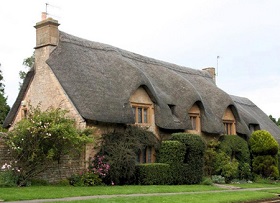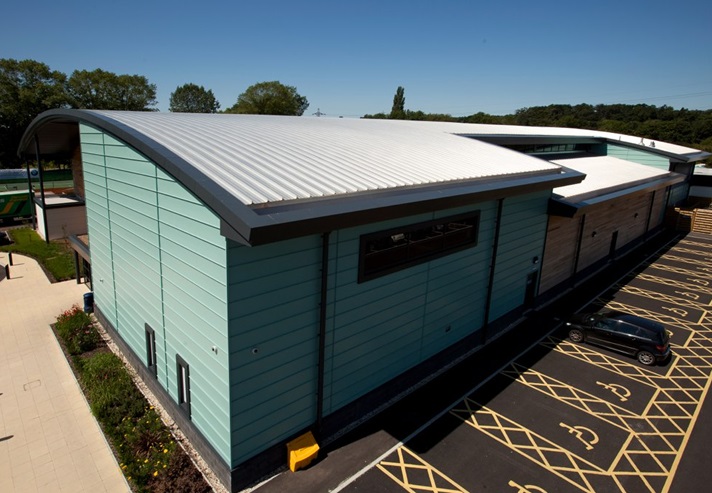Types of roof

|

|

|
Approved document C: Site preparation and resistance to contaminants and moisture, 2004 edition incorporating 2010 and 2013 amendments defines a roof as: ‘Any part of the external envelope of a building that is at an angle of less than 70° to the horizontal.’
A roof is a structure forming the upper covering of a building or other shelter. Its primary purpose is generally to provide protection from the elements, but it may also contribute to safety, security, privacy, insulation, and so on.
Roofs may have openings or windows within them to allow light into buildings, as well as providing, access, ventilation, views, and so on. They also frequently include other features such as chimneys, communications infrastructure, building services, drainage, lighting, access routes, and so on.
Roofs can be constructed from a wide variety of materials and in a wide variety of shapes depending on the requirements they have to satisfy, the local climate, the availability of materials and skills, the span to be covered, and so on.
This article provides links to further information about a range of roof types.
Click on the links below to access more information:
- Blue roof.
- Brown roof.
- Butterfly roof.
- Canopy.
- Clipped gable roof.
- Closed couple roof.
- Cold roof.
- Collar roof.
- Conical roof slating.
- Cool roof.
- Couple roof.
- Crow-stepped gable.
- Cross hip roof.
- Curb roof.
- Dome.
- Domestic roof.
- Dutch gable.
- Fabric roof.
- Flat roof.
- Fly roof (flying roof)
- Gambrel roof.
- Gable roof.
- Geodesic.
- Green roof.
- Half gable roof.
- Hammerbeam roof.
- Hip roof.
- Hyperbolic paraboloid.
- Jerkinhead roof.
- Lean-to roof.
- Long span roof.
- Metal roofing.
- Mansard roof.
- Mono pitch roof.
- Pitched roof.
- Purlin roof.
- Saltbox roof.
- Saw-tooth roof.
- Shell roof.
- Shingle roofing.
- Skillion roof
- Slate roofing.
- Tile roofing.
- Thatch roofing.
- Valley roof.
- Vault.
- Warm roof.
Featured articles and news
RTPI leader to become new CIOB Chief Executive Officer
Dr Victoria Hills MRTPI, FICE to take over after Caroline Gumble’s departure.
Social and affordable housing, a long term plan for delivery
The “Delivering a Decade of Renewal for Social and Affordable Housing” strategy sets out future path.
A change to adoptive architecture
Effects of global weather warming on architectural detailing, material choice and human interaction.
The proposed publicly owned and backed subsidiary of Homes England, to facilitate new homes.
How big is the problem and what can we do to mitigate the effects?
Overheating guidance and tools for building designers
A number of cool guides to help with the heat.
The UK's Modern Industrial Strategy: A 10 year plan
Previous consultation criticism, current key elements and general support with some persisting reservations.
Building Safety Regulator reforms
New roles, new staff and a new fast track service pave the way for a single construction regulator.
Architectural Technologist CPDs and Communications
CIAT CPD… and how you can do it!
Cooling centres and cool spaces
Managing extreme heat in cities by directing the public to places for heat stress relief and water sources.
Winter gardens: A brief history and warm variations
Extending the season with glass in different forms and terms.
Restoring Great Yarmouth's Winter Gardens
Transforming one of the least sustainable constructions imaginable.
Construction Skills Mission Board launch sector drive
Newly formed government and industry collaboration set strategy for recruiting an additional 100,000 construction workers a year.
New Architects Code comes into effect in September 2025
ARB Architects Code of Conduct and Practice available with ongoing consultation regarding guidance.
Welsh Skills Body (Medr) launches ambitious plan
The new skills body brings together funding and regulation of tertiary education and research for the devolved nation.
Paul Gandy FCIOB announced as next CIOB President
Former Tilbury Douglas CEO takes helm.
UK Infrastructure: A 10 Year Strategy. In brief with reactions
With the National Infrastructure and Service Transformation Authority (NISTA).























Comments